For most varieties of bonsai, there are many approaches to repotting. Soil mixes, timing, and the number and selection of roots to be cut can vary widely depending on who is doing the work.
When it comes to azaleas, this isn’t the case.
Satsuki bonsai care – at least the basics – is fairly conventionalized. The planting medium is kanuma. The top dressing is “mountain moss,” and the repotting time is early spring.
Here’s what the process looks like for trees that have been bare-rooted.
Satsuki azalea – ‘Koyo’
Azaleas exported from Japan are frequently cut back, bare-rooted, and wrapped in New Zealand sphagnum moss to keep the roots from drying out.
Roots wrapped in moss
During the bare-rooting process, many roots are often cut to ensure there are no soil particles left behind. The result can be a surprisingly small root ball.
Small rootball
It’s common for these rootballs to be a mix of structural roots and fine roots.
Rootball with big and little roots as seen from below
The basic approach to repotting is the same for azaleas as it is for other varieties. The primary difference is that the most common soil mix is 100% kanuma, a volcanic medium mined 3 meters below the surface in parts of Japan.
After repotting in kanuma
Kanuma is primarily composed of silicic acid (51%), alumina (16%), and iron oxide (9.9%). The kanuma used for growing azaleas is often hidden from sight, however, as it is frequently covered with mountain moss.
After covering the surface of the soil with mountain moss
Mountain moss helps preserve moisture in the pot – a valuable capability considering that azaleas can suffer significant damage when the roots dry out, even if for a short time.
Mountain moss
And that’s the basic approach to repotting satsuki bonsai. If you live in a country that imports bare-root azaleas from Japan, it’s likely that your tree went through a similar process at some point.
Next up: what to do when there are deep pockets in the rootball.
Subscribe to Bonsai Tonight
New Posts Delivered Every Tuesday and Friday

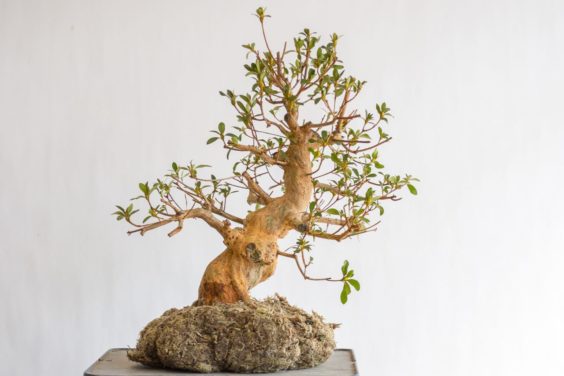
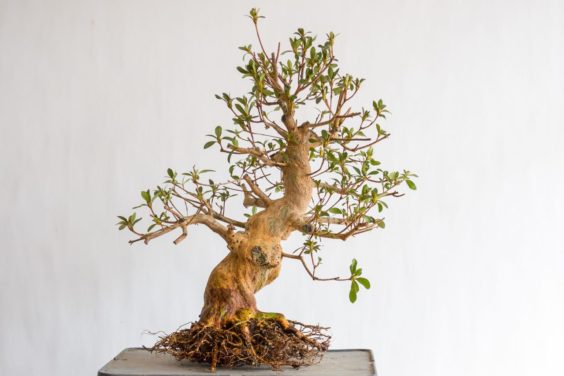
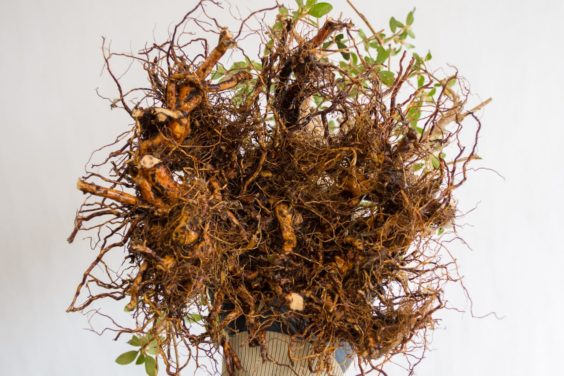
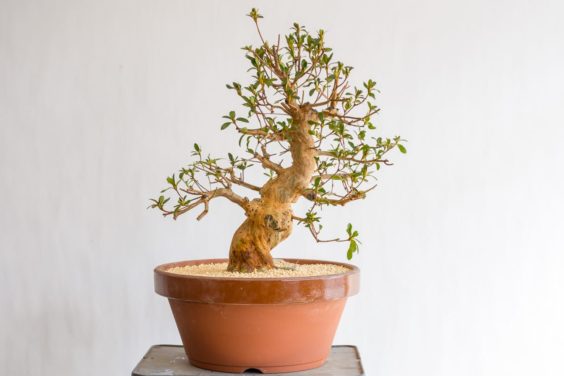
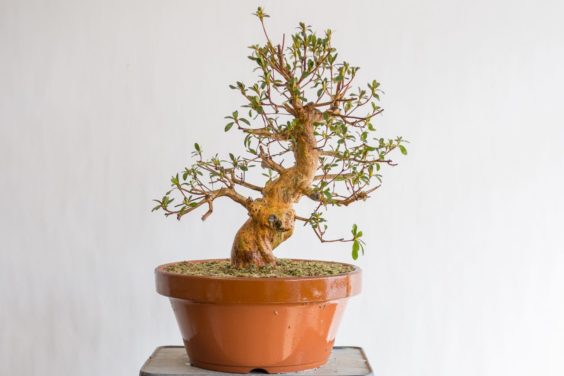
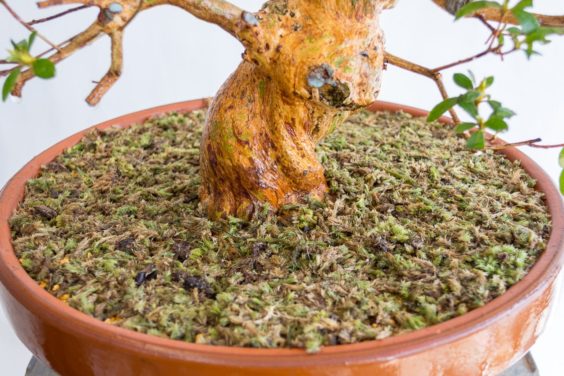
KIP says
That is a large terra pot! Jonas, what’s mountain moss or what’s your definition of mountain moss? Looks like there’s some sphagnum moss in the top dressing as well.
Jonas Dupuich says
Hi Kip – mountain moss is a translation of the Japanese name for it: yamagoke. I don’t know the exact variety. I use it straight without mixing in sphagnum, though white sphagnum can also work.
Ryan Finkbiner says
I just repotted my Nikko azalea using kanuma I bought from your store. It was super easy….much simpler than I had expected. So far the tree seems fine. It is beginning to push new foliage.
Jonas Dupuich says
Hi Ryan – thanks for the update, am happy to hear it!
Tim Shea says
Jonas ,Hi ,, You saw the old Azalea I bought @ C,north ,it appears to have vigor but has not been cared for with an depth .like replanting ,cutting unwanted shoots & or shaping in years ,,,,I can deal with the old wet wood ,,,,,But the rest is a bit intimidating as it is very leggy & my other Azaleas thrive on me just not messing with them beyond minor trimming 4 shape
Jonas Dupuich says
Hi Tim – I’d likely want to do a thorough repotting of the tree to see what’s going on with the roots before doing much work with the branches. Once the tree is growing strong it can respond well to cutback and wiring.
Robert says
I thought bare rooting azaleas was a bad idea. Is there some prep work that must be performed to an azalea before its bare rooted, besides it growing strong and good ferts in the fall?
Jonas Dupuich says
Great question Robert. My understanding is that the growers have so much experience with this (they’ve been exporting bare-root specimens for decades) and they are so skilled are carefully removing the soil that the trees can generally withstand the work. As for the tree health, the trees to be exported are treated like the others and are always kept strong.
Terence Krista says
Where were you able to get such a fine, Japanese grown specimen?
Jonas Dupuich says
Hi Terrence – thanks for the note. I recently imported some – I plan to share more azalea info going forward.
michael j says
great stuff
For repotting, i have mostly seen a fully formed rootball trimmed and placed back in the pot. It would seem that the ‘center’ would ‘age’. Do you also take sections of these old rootballs and thin them at all to allow new soil/roots?
Jonas Dupuich says
Thanks – good question. When the soil in the center of the rootball breaks down to the point where there is little air and poor percolation I’ll replace the soil in this area. Depending on the variety I’ll do this all at once (deciduous) or section by section (other trees).
AHMAD says
how old are your imported azalea ? read for sale?
BY THE WAY THANK YOU FOR LITTLE PRINCESS PERSSIMONS
Jonas Dupuich says
Thanks, Ahmad! The trees will be for sale in approximately 6-12 months after they are better established in their new pots.
AHMAD says
THANK YOU FOR ALL YOUR WEB/INFO.
Farhan says
What would you recommend as an alternative potting substrate to kanuma?
Jonas Dupuich says
Good question Farhan – I don’t have a good suggestion as I don’t have experience with any alternatives over long periods of time.